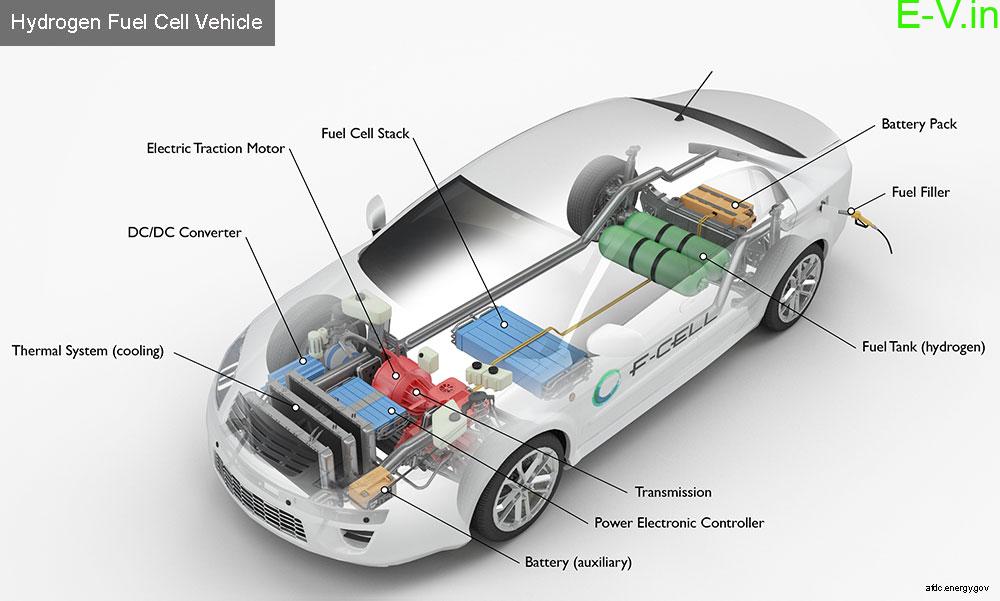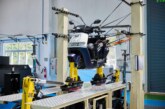
Hydrogen fuel cell for electric vehicles
India is a developing country in all aspects, The National Thermal Power Corporation (NTPC) is planning to test a new hydrogen fuel cell-powered electric vehicles to reduce the carbon footprint in the environment. NTPC is planning to procure such vehicles for pilot projects.
International automakers like Toyota and Hyundai motor, and India’s Tata Motors, Ashok Leyland, KPIT technologies have shown interest in the initiative.

Working of Fuel cell Electric Vehicles (FCEV):
Unlike the battery-powered electric vehicles which use the battery pack as the main fuel, these FCEV’s uses battery packs only to start and store the energy generated from the regenerative braking of a vehicle. Hydrogen is used as the main fuel in FCEV’s so it does not require plug-in charging for battery packs but they need refilling of hydrogen fuel.

Source: US Department of Energy US Department of Energy
Key Components of a Hydrogen Fuel Cell Electric Car:
Battery (auxiliary):
In an electric drive vehicle, the auxiliary battery provides electricity to start the car before the traction battery is engaged and also powers vehicle accessories.
Battery pack:
This battery stores energy generated from regenerative braking and provides supplemental power to the electric traction motor.
DC/DC converter:
This device converts higher-voltage DC power from the traction battery pack to the lower-voltage DC power needed to run vehicle accessories and recharge the auxiliary battery.
Electric traction motor (FCEV):
Using power from the fuel cell and the traction battery pack, this motor drives the vehicle’s wheels. Some vehicles use motor generators that perform both the drive and regeneration functions.
Fuel cell stack:
An assembly of individual membrane electrodes that use hydrogen and oxygen to produce electricity.
Fuel filler:
A nozzle from a fuel dispenser attaches to the receptacle on the vehicle to fill the tank.
Fuel tank (hydrogen):
Stores hydrogen gas on board the vehicle until it’s needed by the fuel cell.
Power electronics controller (FCEV):
This unit manages the flow of electrical energy delivered by the fuel cell and the traction battery, controlling the speed of the electric traction motor and the torque it produces.
Thermal system (cooling) – (FCEV):
This system maintains a proper operating temperature range of the fuel cell, electric motor, power electronics, and other components.
Transmission (electric):
The transmission transfers mechanical power from the electric traction motor to drive the wheels.
The present FCEVs in the market are listed below:
- Hydrogen-powered Toyota Mirai
- Hydrogen-powered Hyundai clarity
- Hydrogen-powered Hyundai Nexo
Also Read: Toyota testing hydrogen fuel cell-powered electric car in India
If you are an EV manufacturer or EV Dealer or EV Supporter who want to share news related to electric vehicles on our website, please send an email to crm@electricvehicles.in
For the latest electric vehicles news, follow electricvehicles.in on Twitter, Instagram,Facebook and our YouTube Channels English, Hindi, Telugu and Tamil







